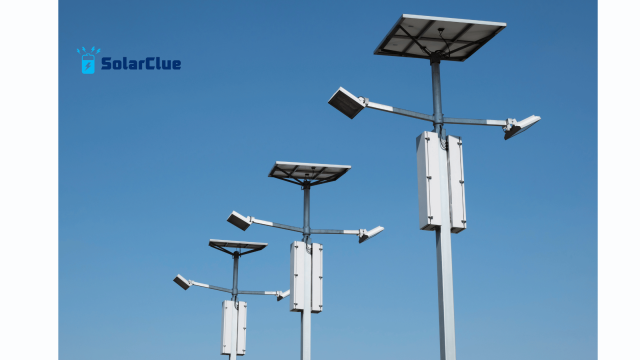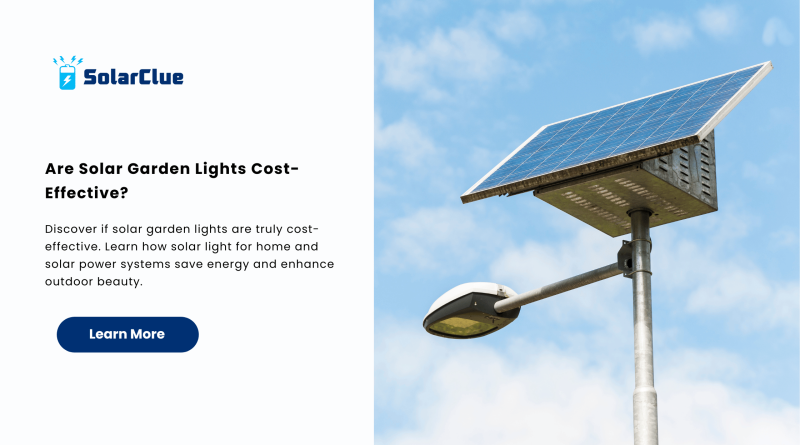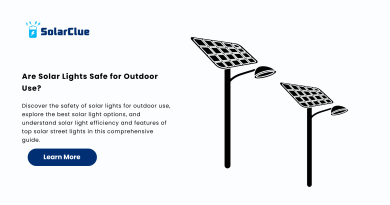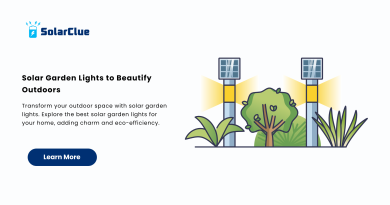Are Solar Garden Lights Cost-Effective?
With the rising demand for sustainable energy and affordable outdoor lighting, many homeowners are asking, Are solar garden lights cost-effective? As green energy becomes more mainstream, solar light is emerging as a practical, low-maintenance, and eco-friendly alternative. In this blog, we’ll dive deep into the benefits, savings potential, and long-term value of solar light for gardens, ensuring you make a well-informed decision.
Table of Contents
- 1 How Solar Garden Lights Work
- 2 The Initial Investment vs. Long-Term Savings
- 3 Environmental Benefits of Solar Garden Lights
- 4 Comparing Solar Lights with Traditional Outdoor Lights
- 5 Suitability for Various Garden Sizes and Styles
- 6 Durability and Weather Resistance
- 7 Do Solar Lights Work in All Weather Conditions?
- 8 Ideal Placement for Maximum Efficiency
- 9 Common Myths About Solar Garden Lights
- 10 Real-World Case Studies
- 11 Maintenance Tips for Longevity
- 12 How to Choose the Right Solar Garden Light
- 13 Integration with a Complete Solar Power System
- 14 Government Incentives and Subsidies in India
- 15 Conclusion: Are Solar Garden Lights Worth It?
How Solar Garden Lights Work
Solar garden lights operate using photovoltaic (PV) cells that absorb sunlight during the day and convert it into electrical energy. This energy is stored in a rechargeable battery and powers the LED light at night. These systems are typically self-sufficient, requiring little to no manual intervention.
Key Components:
- Solar Panel: Captures sunlight.
- Battery: Stores solar energy.
- LED Bulb: Provides illumination.
- Controller: Manages energy flow and lighting schedule.
The Initial Investment vs. Long-Term Savings
When comparing upfront costs, solar light for home use may seem more expensive than traditional lighting. However, the long-term savings are significant. No wiring, low maintenance, and zero electricity bills contribute to cost-effectiveness over time.
Average Pricing
- Entry-level solar lights: ₹200 – ₹500 per unit
- Mid-range decorative models: ₹800 – ₹1,500
- High-end motion-sensor or powerful LED lights: ₹2,000+
Cost-Saving Factors
- No electricity consumption
- Low maintenance costs
- Long lifespan of LEDs and solar panels
Environmental Benefits of Solar Garden Lights

One of the most appealing aspects of solar garden lights is their eco-friendliness. These lights reduce reliance on fossil fuels and contribute to lowering carbon footprints. Since they don’t draw power from the grid, they also reduce peak demand pressure on power plants.
Sustainable Impact
- Zero emissions
- No toxic materials
- Minimal waste
Comparing Solar Lights with Traditional Outdoor Lights
Traditional outdoor lights rely on the electrical grid, involve higher installation costs (wiring, labor), and consume electricity continuously. In contrast, solar light units offer autonomous operation and near-zero ongoing expenses.
Performance Comparison
| Feature | Solar Light | Traditional Light |
|---|---|---|
| Installation Cost | Low | High |
| Energy Cost | Zero | Recurring |
| Environmental Impact | Minimal | High |
| Maintenance | Very Low | Moderate to High |
Suitability for Various Garden Sizes and Styles
Whether you have a compact balcony garden or a sprawling backyard, solar light for gardens comes in diverse styles—pathway lights, string lights, spotlights, and decorative lanterns—to match every aesthetic.
Design Options
- Pathway markers for walkways
- Decorative fairy lights for ambiance
- Motion-sensor security lights
- Spotlights for highlighting features
Durability and Weather Resistance
Quality solar garden lights are built to withstand varying climates—rain, dust, heat, and even snow. Most models come with an IP rating, indicating their water and dust resistance level.
Durability Tips
- Choose lights with IP65 or higher
- Opt for rust-proof materials like stainless steel or ABS plastic
- Clean solar panels periodically for efficiency
Do Solar Lights Work in All Weather Conditions?
Solar light performance depends on the amount of sunlight they receive. Cloudy or rainy weather can reduce charging efficiency, but modern models can store enough energy for 2–3 days of use even with limited sunlight.
Ideal Placement for Maximum Efficiency
To get the most out of your solar light for gardens, proper placement is key.
Best Practices:
- Place panels in direct sunlight for 6–8 hours daily
- Avoid shaded areas under trees or eaves
- Angle the panels to face south (in India)
Common Myths About Solar Garden Lights
Let’s debunk a few misconceptions:
- Myth: Solar lights are dim — Fact: LED technology ensures bright, focused lighting.
- Myth: They’re not durable — Fact: High-quality units last 3–5 years or more.
- Myth: Installation is complex — Fact: No wiring or electricians needed.
Real-World Case Studies
Case Study 1: A family in Bangalore switched to solar light for home use, including garden lights. Within one year, they saved over ₹3,000 in energy bills.
Case Study 2: A hotel resort in Kerala deployed over 100 solar light units in its landscape. Not only did they enhance aesthetics, but they also qualified for green building certification.
Maintenance Tips for Longevity
To ensure long-lasting performance:
- Clean solar panels monthly
- Replace batteries every 1.5–2 years
- Store lights indoors during extreme weather (for decorative types)
How to Choose the Right Solar Garden Light
Factors to Consider:
- Lumens output (brightness)
- Battery capacity
- Solar panel efficiency
- Weatherproof design
- Warranty and customer reviews
Integration with a Complete Solar Power System
For homeowners already investing in a solar power system, solar light for gardens can seamlessly integrate with the broader energy setup, further reducing reliance on conventional electricity.
Government Incentives and Subsidies in India
India promotes renewable energy adoption through various subsidies and incentives on solar power systems. While individual garden lights may not qualify, broader solar installations often do.
Possible Benefits:
- Income tax deductions
- Net metering benefits
- Reduced GST on solar equipment
Conclusion: Are Solar Garden Lights Worth It?
In short—yes, solar garden lights are cost-effective. With minimal running costs, zero electricity usage, and low environmental impact, they offer a smart investment for any homeowner. Add to that the aesthetic appeal and energy independence, and the answer becomes clear.
Still wondering where to find the best options? Well, your search ends here—visit solarclue.com for the best solar lighting solutions or explore more tips and guides at blog.solarclue.com—where sustainable living begins!
FAQs
Q1: How long do solar garden lights last?
Most solar garden lights last between 3 to 5 years depending on usage and weather conditions.
Q2: Can solar lights charge on cloudy days?
Yes, they can charge, although efficiency drops. Many lights have batteries that store extra power for low-sunlight days.
Q3: Are solar lights safe to use around pets and children?
Absolutely. With no wiring or electric shock risks, solar light is a safe lighting option.
Q4: Do solar garden lights need direct sunlight?
For optimal charging, direct sunlight is best, but many models still work in partial shade.
Q5: Can I replace the batteries in my solar garden lights?
Yes, most models have replaceable rechargeable batteries that can be swapped every couple of years.




